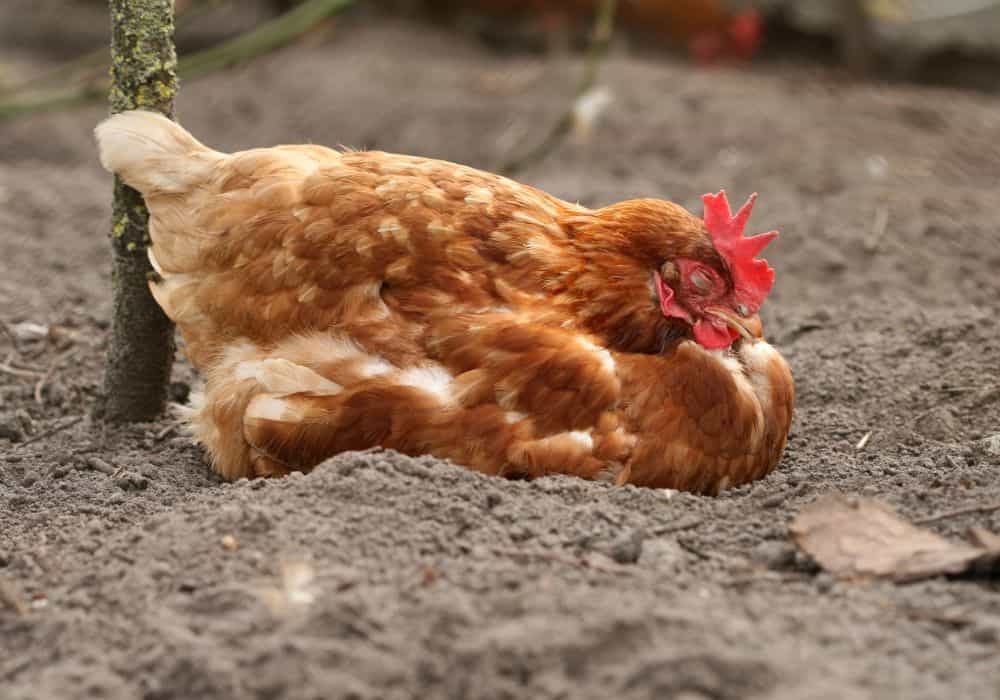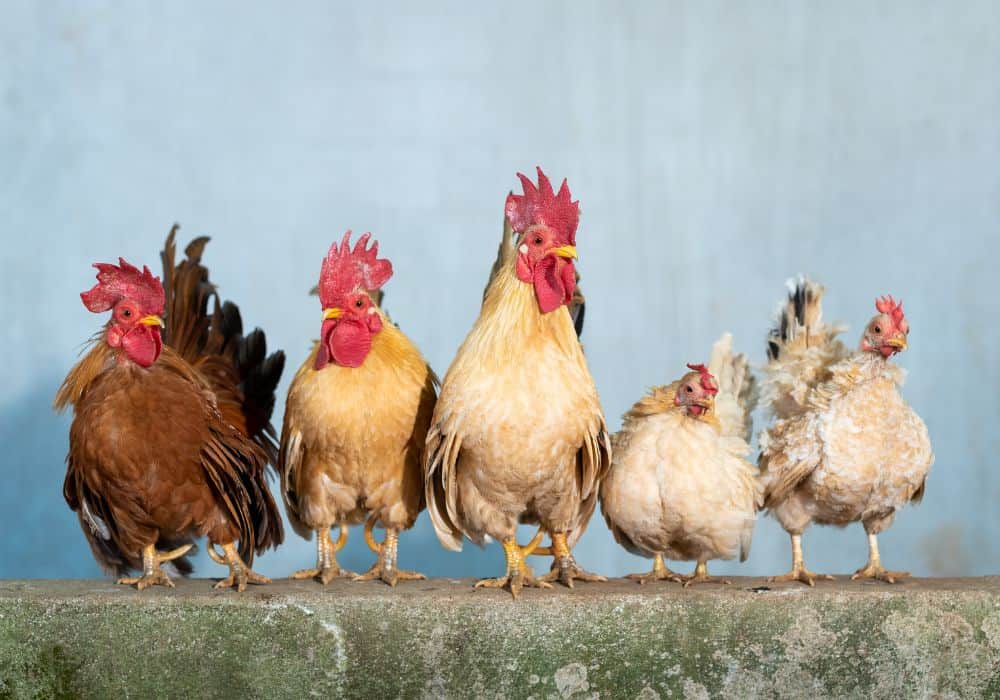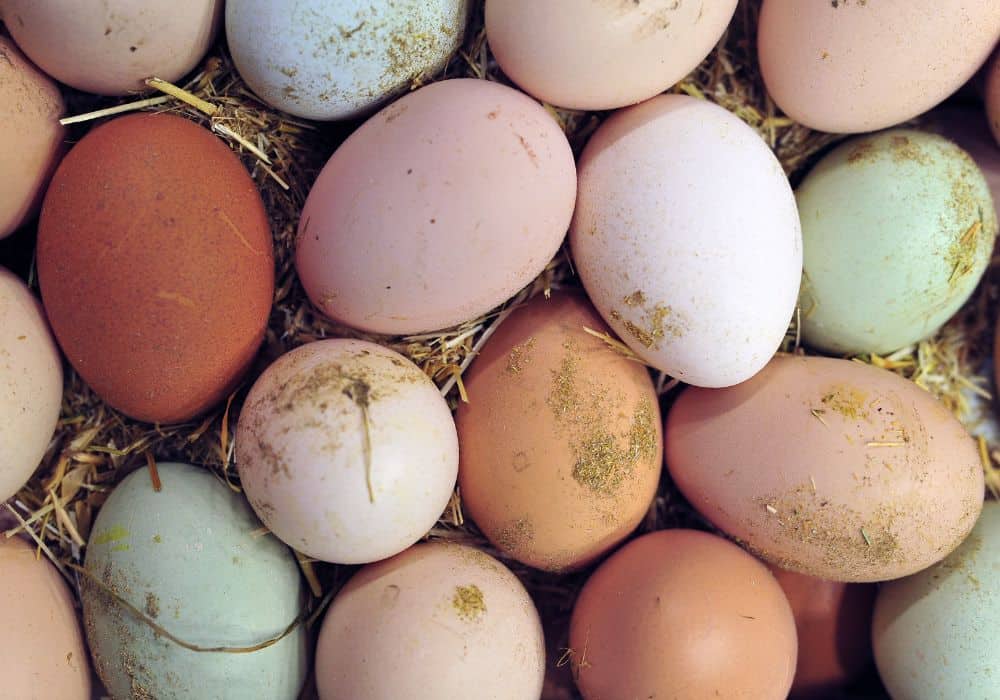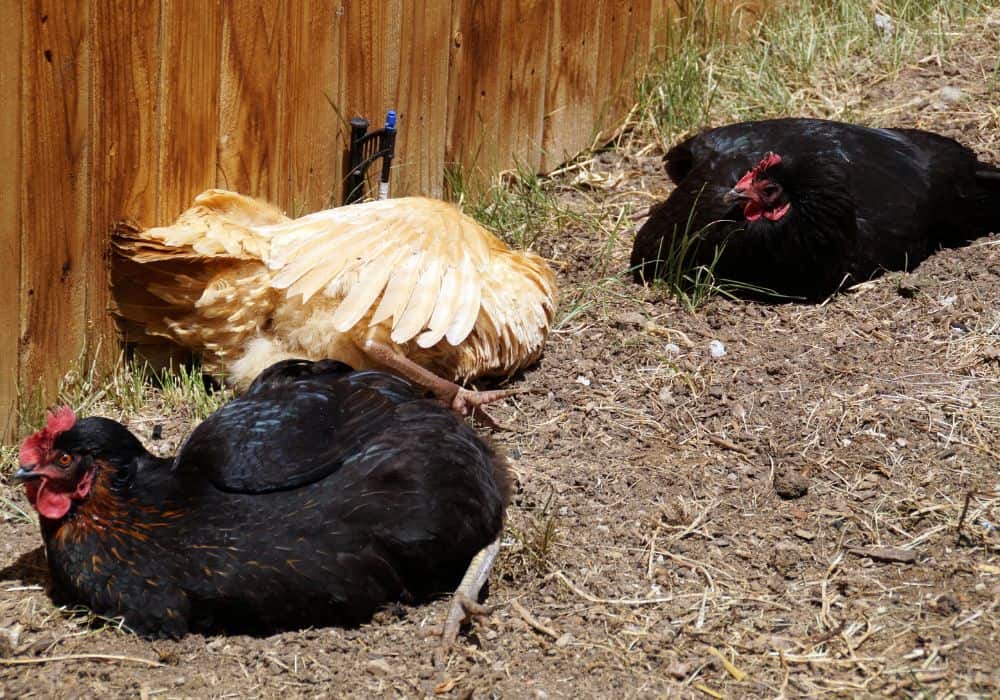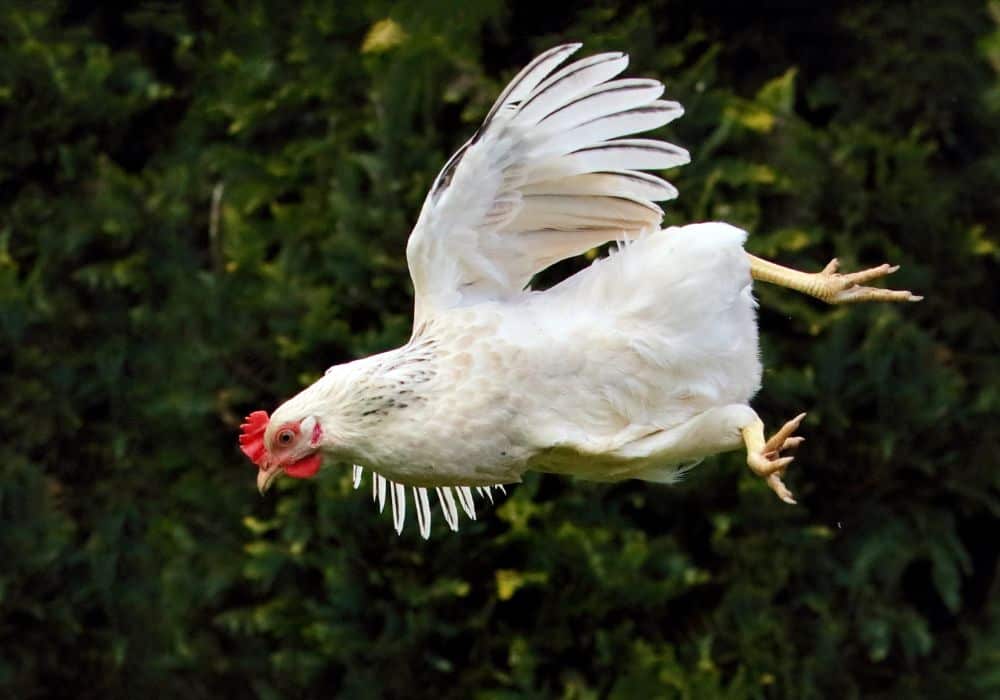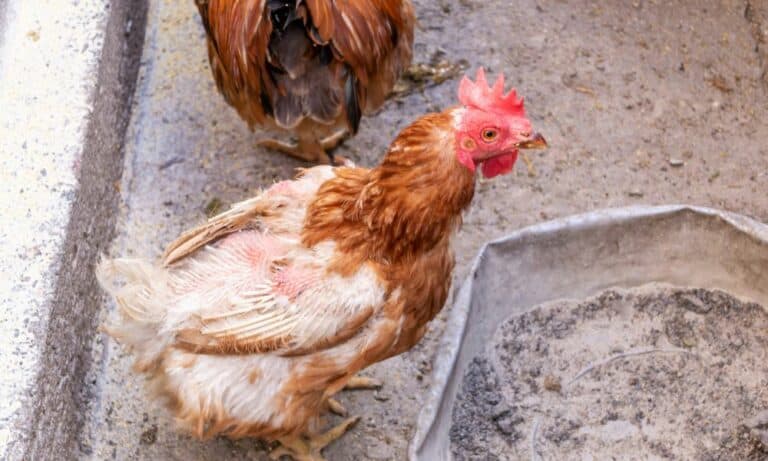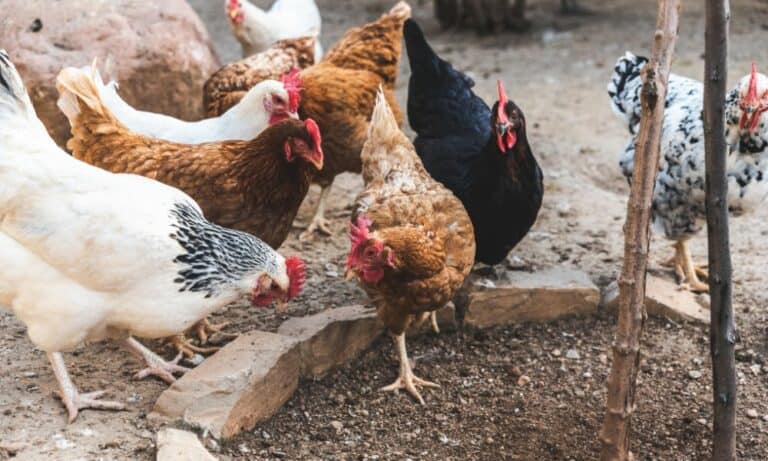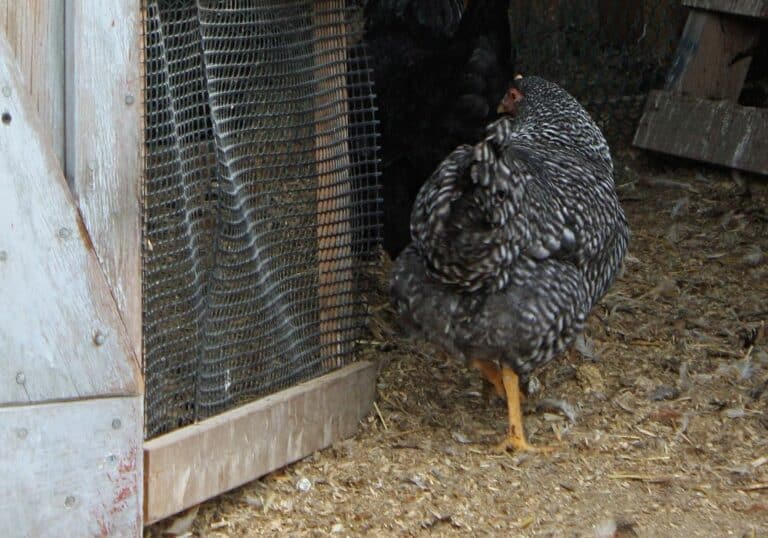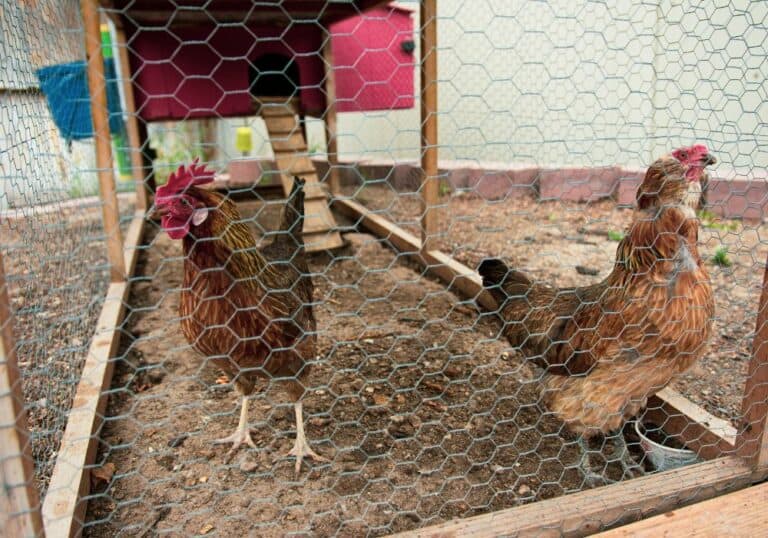Chickens have a long and fascinating history – from being direct descendants of the dinosaurs, through spending millions of years as woodland animals, to then being at the center of the 20th-century poultry industry boom, and to be accepted as backyard and even household pets by more and more people today.
With so much going on, it shouldn’t surprise us that there are countless interesting things to explore about these peculiar birds. Here are just 10 fun facts about chickens.
10 Fun Facts You Want To Know About Chickens
1. Chickens can sleep with only half their brain at a time
It’s well-established that chickens can dream just like people and they also have the same REM (Rapid eye movement) sleep stage as we do. What’s even more peculiar, however, is that chickens also have a whole other sleep stage called Unihemispheric slow-wave sleep or USWS.
During the USWS stage, one hemisphere of the chicken’s brain is “asleep”, i.e. it has a slow wave electrical activity, while the other hemisphere has a low voltage electrical activity, which means that it remains partly awake.
In other words, chickens can literally “sleep with one eye open”. This is a skill that only chickens and a few other bird and marine species have. Obviously, this is highly beneficial from an evolutionary standpoint as it gives chickens much greater survivability.
2. They are incredibly smart – they have a great memory and their own hierarchy
When talking about intelligent birds, people often bring up ravens, crows, and parrots. Few people mention birds such as chickens and pigeons, however, which is a pity because they too are incredibly intelligent.
Chickens, for example, have amazing long-term memory capabilities and they can recognize and remember over 100 faces with ease over many months. Everyone who’s looked after chickens can attest that they remember and distinguish between the different people and animals around them, and they respond differently depending on what they think of the specific person.
This intelligence goes so far that chickens have even developed a hierarchical structure and social ladder, just like people – this is where the term “pecking order” comes from. This can be observed easily when looking at how roosters interact with each other, how they determine who’s boss, and more. Chickens even sometimes bully each other!
Another proof of their intelligence is that chickens love to play, dance, and engage in other types of recreational activities that we know are performed by intelligent beings. This goes so far that chicks develop object permanence as early as their second day after hatching. For comparison, human toddlers only develop this when they are about 6 months old and most other animals never develop object permanence.
3. Chickens have their own language
The intelligence of these birds goes so far that they have basically developed their own unique language that even has variations depending on the breed. The whole spectrum of chicken “words” includes over 30 different sounds with their specific unique uses – things mother hens tell their baby chicks, alerting others about food or predators, even purring sounds by female chickens to their still-unhatched eggs.
4. The eyesight of chickens is better than ours
We often mention eagles, hawks, and owls when talking about birds with eyesight much greater than ours. But they are far from the only ones – even chickens have much stronger eyes than us. They have a very strong color vision with five types of light receptors and they even have near-360-degree telescopic vision, just like owls.
5. There are over 33 billion chickens in the world
Some estimates put the total number of chickens at the time of writing this at over 25 billion, and others – over 33 billion! Of course, such numbers can never be precise but, interestingly, even the total number of the different breeds of chickens isn’t precise either.
For example, the American Poultry Association recognizes only 65 different “accepted” chicken breeds and doesn’t even recognize all of their possible plumage types. If we were to consider the many chicken breeds and sub-breeds that aren’t officially recognized, however, the total number would be somewhere in the hundreds.
6. Different chicken breeds have different egg colors
Chicken eggs come in multiple different colors but few people realize why. There are several different factors that go into why your hens are laying white eggs, brown eggs, or anything in between:
- First, there is your chickens’ breed. Different breeds lay different color eggs – Leghorn chickens always lay white eggs, for example, while Orpington chickens lay brown eggs and Ameuraucanas – blue.
If you don’t know which colors are associated with which breeds, you can look at the chickens’ earlobes – breeds with white earlobes lay white eggs, those with red earlobes lay browner eggs, and so on. - Chicken eggs can also have lower shell pigmentation based on the presence of certain drugs in the chicken’s system such as sulfonamides. This is why you may notice supermarkets offering predominantly pale eggs around egg-related holidays such as Easter – that’s because many farmers give their chickens drugs prior to the holidays to ramp up their egg-laying capabilities.
- Many chicken breeds have also gradually lost some of their eggs’ pigmentation over the past decades as they have consistently been tasked with laying more and more eggs. So, while breeds such as the Barnevelder used to have dark chocolate brown eggs about a century ago, their eggs now have a lighter brown color.
7. Chickens are omnivores
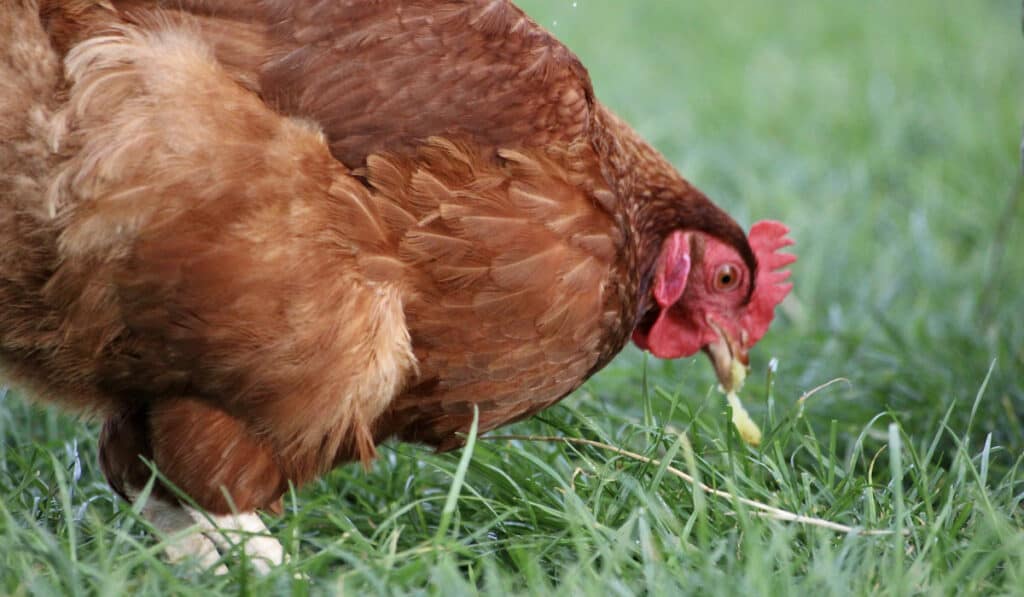
We may often think of chickens as herbivores but that’s not really true. In addition to grass, grain, and seeds, chickens will also readily eat insects, small lizards and toads, and even mice if and when they can catch them.
This is a big reason why free-ranging your chickens and letting them explore and forage on their own is important – it contributes to their emotional health and it allows them to supplement their diet with more proteins.
Some chicken breeds are so enthusiastic about foraging and hunting for small pests that they are compared to cats in their ability to keep mice off your property. Giving your chickens the freedom to free-range around your property can therefore have the extra benefit of keeping pests away at no cost for you – on the contrary, you’ll save on some of the chickens’ feeding expenses.
8. Chickens are closer descendants of dinosaurs than most other birds
Comparing your backyard chickens to a Tyrannosaurus Rex or a Velociraptor can seem silly at first but chickens and some other flightless or near-flightless birds are actually very close descendants of dinosaurs – much more so than most other bird species too. This can easily be discerned from the way chickens move and even from some of the sounds they make around the yard.
Don’t take our word for it, of course – chickens are established as one of the few closest descendants of dinosaurs alongside turkeys, shoebills, condors, vultures, hoatzins, cassowaries, and ostriches.
9. They bathe by rolling in the dirt
Dust bathing can seem silly to us and it certainly doesn’t look hygienic but it’s chickens’ preferred way to keep their feathers clean. And there are good reasons for this – “bathing” in dust and dirt helps knock dead feathers, oil buildup, and parasites off of chickens’ feathers and it can even supply their skin with valuable minerals and vitamins, depending on where exactly they are bathing.
That’s why, one of the easiest way to keep your chickens healthy and happy is to allow them the right opportunity to dust bathe while free ranging. This is infinitely better for both your chickens, their produce, and your budget than just pumping them with antibiotics and other drugs while keeping them locked in cages.
10. Chickens can fly but their best mobility trait is their ability to take sharp turns when running
While they often get grouped up with flightless birds, many chicken breeds can indeed fly, albeit over short distances only. Some contemporary crossbreeds have even more diminished flight abilities because they have been bred to have larger and larger bodies but even those breeds can usually do some “flying jumps”.
From an evolutionary standpoint, the benefits of even such limited flying abilities are clear – they help chickens escape predators or jump over obstacles to get to food. Chickens don’t migrate and they feel comfortable enough on the ground so they don’t have that much of a need for longer flights.
In fact, chickens’ even greater mobility trait lies in their running skills rather than their flight. While most predators expect flight and are prepared to snatch chickens mid-air, the ability of these birds to sprint at up to 9 miles per hour and take sharp turns – often over 90 degrees – while sprinting is what often saves their hides in the wild.
Conclusion
Of course, this list isn’t all that exhaustive and there are many other interesting factoids to know about these awesome birds – we’ve explored a lot of them in our other articles too.

